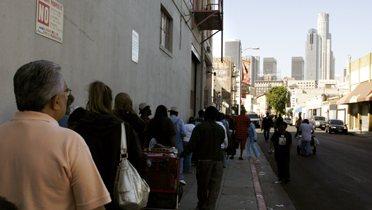According to new data recently released by the Census Bureau, 14.3 percent of Americans were living in poverty in 2009. In September of 2009 we performed an analysis in which we simulated what would happen to the poverty rate over the next several years based on projections of the unemployment rate and the estimated relationship between the poverty rate and the unemployment rate. We provide a brief update to that analysis here. The bottom line of this analysis is that the recession is likely to have a dramatic impact on poverty over the next several years. Our simulations suggest that the overall poverty rate will increase from 12.5 percent in 2007 to nearly 16 percent by 2014 and that the child poverty rate will increase from 18 percent in 2007 to nearly 26 percent in 2014, adding about 10 million people total and 6 million children to the ranks of the poor by the middle of the current decade. Despite the fact that our simulation accurately predicted the poverty rate for 2009, we emphasize that there is a strong possibility that the estimates we present here are conservative, given that we do not know how dramatic of an effect the current recession will have on structural unemployment in the future. In light of these increases we believe that programs such as Food Stamps and TANF that can help to buffer the effects of the recession on lower-income families should be maintained or increased in these difficult economic times.
With the economic recovery stagnating, projections of the unemployment rate over the next 5 to 10 years tell a story of lingering high unemployment (see Table A). The Congressional Budget Office, the Office of Management and Budget (OMB), and the Economist Intelligence Unit (EIU) all project an average annual rate of 9 percent or above for 2010 and 2011 and above 8 percent for 2012. Both CBO and OMB project that the rate will drop relatively quickly afterward, settling near 5 percent by the middle of the decade. However, more recent data suggest these longer-term projections may be overly optimistic and may not adequately incorporate the effects of a prolonged period of high unemployment on the level of structural unemployment. Indeed, the latest EIU projections, released on September 8, 2010, see the unemployment rate remaining well above 8 percent through 2014 (the latest year for which EIU provides projections). Taking these projections at face value, how will these elevated levels of unemployment affect poverty?
Isabel Sawhill has written more on this topic in the Brookings UpFront blog, where she discusses the need to strengthen the safety net in light of the depth of the recession and recent poverty increases.




